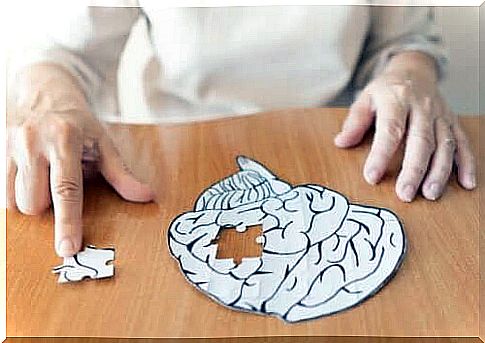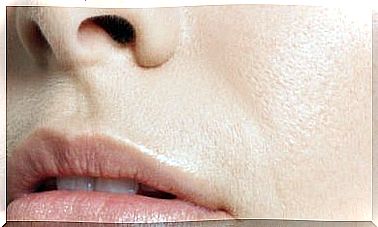What Exactly Is Psychoanalysis? How Does It Work?

Psychoanalysis is the most important historical precedent of psychology. In fact, it is common to hear this kind of reference in our daily life. Often people naturally use terms like “unconscious,” “suppression,” or “mental decay.” All these sentences come from the teaching of psychoanalysis.
In today’s article , we are going to discuss the term psychoanalysis to understand what it is and how this theory works. It all starts with Sigmund Freud.
What is Psychoanalysis?
Psychoanalytic theory holds that human behavior is the product of a series of psychological interactions at different levels of consciousness: unconscious, preconscious, and conscious. Freud was greatly recognized for having created the theory of psychoanalysis in the beginning.
With the passage of time, psychoanalytic concepts began to be questioned more and more, as psychology took a more scientific (Spanish link) and less philosophical direction.
Currently, one can define psychoanalysis as a theory to understand the functioning of the human mind from an unconscious aspect. In fact, psychology is separated from psychoanalytic theory.
However, many of the concepts of psychoanalysis remain within psychological language and can illustrate some of the phenomena of human thought.
Psychoanalytic theory represents the origin of modern psychology, especially in the field of psychotherapies. Many psychologists have a predilection for psychoanalysis as a therapy and are even trained as psychoanalytic therapists. (Besides having a degree in psychology).
How does psychoanalysis work?
The word is the main source of psychoanalytic therapy. It can help patients through dialogue by confronting them with situations from their past through weekly ongoing sessions.
Childhood is one of the most emphasized stages during psychoanalytic sessions. The main idea in the functioning of these therapies is to access certain information. That which people suppress in their unconscious minds.
This is exactly how a patient can adaptively internalize their past experiences and respond better in the present. According to Freud, there are three cases in the psychic apparatus: the ‘id’, the ‘ego’ and the ‘superego’.
- The id represents people’s innate desires.
- The superego is the product of the individual’s relationship with their environment. It seeks a balance between desires and coexistence.
- Finally, the ego is the conscious agency.
Psychoanalysis is a lengthy therapeutic process that can take years. A number of people think that the amount of time it takes to get results is counterproductive. In fact, opponents of the theory argue that there is no point in subjecting someone to such a lengthy review process.
The Fundamental Principles of Psychoanalysis
Every psychoanalyst must be able to treat his patient according to the needs of his individual case. The styles of therapeutic approach will therefore depend to a great extent on the professional directing the process.
However, there are some fundamental principles that we should not overlook. So here are some guidelines to better understand how psychoanalysis works:
- First , the root of current conflicts often lies in unresolved childhood issues.
- The patient’s psychological conflicts are also the result of unconscious thought processes.
- The latent problems are the cause of the symptomatology.
- Finally, the psychoanalytic process helps to become aware of those unconscious thoughts (at which point the subject has access to the real solution to their conflict).
There is also the concept of drives and drives within psychoanalytic theory. First of all, urges represent those intense and uncontrollable desires of people. It is the desires that you have to keep thinking about.
Urges and drives are visceral and demand to be satisfied. Motives, on the other hand, are all social norms and moral information that each subject possesses and interprets in a logical way (Spanish link). The drives ensure that people cannot satisfy drives in a maladaptive way.
What is the purpose of psychoanalytic therapy?

The psychoanalytic process helps to gain a comprehensive understanding of one’s own personality. Thus, the therapies work quite well for people who experience intense and recurrent emotional stress. This is because it helps them understand the exact causes of their problems.
A patient finds relief if he can find the cause of his discomfort. The effect of removing uncertainty is very healing. In contrast , the psychoanalytic process is not advisable for those who need a quick solution to a specific conflict.
As we mentioned above, Sigmund Freud’s theory focuses on the unconscious sides of the personality. Those that are not easily accessible in the short and medium term. Defense mechanisms are the main drawbacks of fast results.
Freud found that a series of psychological phenomena occurred in the mind to protect the subject when one began to confront one with certain uncomfortable realities. Paradoxically, the defense mechanisms of the unconscious have a detrimental effect, as they prevent access to reality.
Criticism of the theory
Throughout history, psychoanalytic theory has been severely criticized because many of its postulates have not been proven to be effective. That is, going back to childhood to resolve a conflict in the present works for some people, but it’s not for everyone.
As you can see, psychoanalysis is considered an anecdotal treatment tool. Within the world of psychological jargon, however, the words and terms borrowed from this theory have remained symbolically valid.









